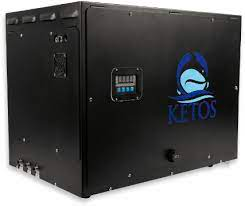Remotely Measure Levels of Nitrites in Water
Monitoring Water for Nitrites With KETOS SHIELD
Accurately Measure Levels of Total Nitrites in Water
Download our KETOS SHIELD overview to reveal how:
- KETOS can deliver lab-accurate results (in ppb) across 30+ water parameters
- Easy it is to install, integrate, and operate within existing infrastructure (without organizations having to reorganize their operations)
- The device eliminates the need for static water testing, constant cleaning, or manual calibration with maintenance and hardware/software updates managed by KETOS
- Users gain easy access to data (even off-site) for easier monitoring and management
Learn To Automate Total Nitrates Testing In Water With Lab-Accurate Results in Real-Time
"*" indicates required fields
Testing for Total Nitrites in Water
 KETOS SHIELD allows for total nitrites monitoring (and 30+ other water testing parameters) in real-time, all while lowering up-front costs from manual sampling and third-party lab fees by leveraging an innovative $0-CAPEX subscription model.
KETOS SHIELD allows for total nitrites monitoring (and 30+ other water testing parameters) in real-time, all while lowering up-front costs from manual sampling and third-party lab fees by leveraging an innovative $0-CAPEX subscription model.
Discover our award-winning water management system that can provide water operators with real-time access to data and lab-accurate monitoring. Check your nitrate levels and 30+ other parameters. Follow along with the latest water testing parameters on your very own customizable dashboard that’s available via any mobile device.
Why Monitor Water for Nitrites with KETOS
Nitrites can naturally occur in low levels in groundwater. However, levels can spike if surface run-off from agricultural processes (including fertilizer and animal waste) or sewage leaks go unchecked. Nitrites become an issue once they enter surface and groundwater as they can stimulate bacteria growth.
If nitrites are not removed from process water or wastewater, they can cause severe algae growth in water sources, depleting the water of oxygen and leading to mass die-offs and potential ecosystem collapse. It can also cause odor problems.
Nitrites are also highly toxic to humans and animals and can enter the body as a nitrate. In high levels, it can disrupt oxygen delivery. This is why it’s essential to monitor for and properly remediate nitrites, particularly in agricultural and sewage treatment scenarios. Understanding the levels of nitrites in water and when spikes may occur can help protect existing water supplies and the surrounding community from contamination.
What are the Issues with Nitrites in water?
Nitrites, chemical compounds containing nitrogen and oxygen, can be found in water sources due to various natural and anthropogenic sources. While nitrites play a role in nitrogen cycling and are essential for certain biological processes, elevated levels in water can pose significant health risks and environmental concerns. Here are key issues associated with nitrites in water:
- Health Risks: High concentrations of nitrites in drinking water pose serious health risks to humans, particularly infants and young children. Nitrites can interfere with the blood’s ability to transport oxygen, leading to a condition known as methemoglobinemia or “blue baby syndrome.” This condition can cause symptoms such as shortness of breath, cyanosis (bluish discoloration of the skin), and even death in severe cases. Chronic exposure to nitrites has also been associated with increased risks of certain cancers and other health problems.
- Contamination Sources: Nitrites can enter water sources through various pathways, including agricultural runoff, wastewater discharges, and industrial activities. Agricultural practices such as fertilizer application, livestock farming, and crop irrigation are major sources of nitrite pollution. Runoff from urban areas, industrial facilities, and septic systems can also contribute to nitrite contamination in surface water and groundwater.
- Groundwater Contamination: Nitrites are highly soluble and can leach into groundwater, posing risks to drinking water supplies. In areas with intensive agricultural activity or high population density, groundwater nitrite contamination is a significant concern, particularly for private wells and rural communities that rely on groundwater for drinking water. Monitoring and managing nitrite levels in groundwater are essential to protect public health and ensure water safety.
- Environmental Impact: Elevated nitrite levels in water bodies can have adverse effects on aquatic ecosystems and biodiversity. Nitrites can contribute to eutrophication, a process characterized by excessive algal growth, oxygen depletion, and habitat degradation. Algal blooms fueled by nitrite pollution can disrupt aquatic food chains, lead to fish kills, and degrade water quality, impacting recreational activities and ecosystem health.
- Regulatory Compliance: Governments and regulatory agencies establish maximum contaminant levels (MCLs) for nitrites in drinking water to protect public health. Compliance with these standards presents challenges for water utilities and municipalities, requiring effective monitoring, treatment, and management measures to mitigate nitrite pollution and ensure water quality.
- Treatment Challenges: Removing nitrites from water sources can be challenging, especially in large-scale water treatment facilities. Conventional treatment methods such as oxidation, filtration, and ion exchange may be effective for nitrite removal, but they may require additional steps or specialized equipment to achieve desired water quality standards. Implementing effective treatment strategies is essential to minimize nitrite exposure and protect public health.
Causes of Nitrites in Water
Nitrites in water typically result from the breakdown of organic matter containing nitrogen compounds, such as animal waste, plant debris, and sewage, through microbial action. Additionally, industrial activities, particularly those involving chemical manufacturing and processing, can release nitrites into water bodies through wastewater discharges. Agricultural practices, including the use of nitrogen-based fertilizers and pesticides, also contribute to nitrite pollution, as rainwater and irrigation can carry these chemicals into water sources. Moreover, nitrites can form as intermediate products during the biological oxidation of ammonia in water treatment systems. While nitrites themselves are not as common in water as nitrates, they are of concern due to their potential to react with organic matter and form nitrosamines, which are known carcinogens. Therefore, it is crucial to monitor and manage nitrite levels in water to safeguard both human health and the environment.
Acceptable Levels of Nitrites in Water by Industry
Acceptable levels of nitrites in water vary across industries due to different purposes and sensitivities. In agriculture, where irrigation is critical, levels must be carefully monitored to prevent harmful effects on crops and soil. Similarly, in aquaculture, nitrite concentrations are tightly regulated to safeguard aquatic ecosystems and the health of aquatic organisms. In the food and beverage industry, particularly in water used for processing and manufacturing, stringent standards ensure product safety and consumer health. Additionally, in pharmaceutical and healthcare facilities, maintaining low nitrite levels is crucial for drug manufacturing and patient care. Overall, understanding and adhering to industry-specific guidelines for nitrite levels in water is essential to mitigate environmental impact, ensure product quality, and safeguard human and ecological health.
| Industry | Acceptable Nitrite Levels (mg/L) |
|---|---|
| Agriculture | 0.1 – 1.0 |
| Aquaculture | 0.02 – 0.5 |
| Food and Beverage | 0.05 – 0.1 |
| Pharmaceutical and Healthcare | 0.005 – 0.02 |
How to Easily Monitor Water for Nitrites
Instead of measuring nitrites with a meter that only measures a handful of conditions; the KETOS SHIELD is capable of mentoring dozens of water related issues — in real-time. Get your water testing parameters (including nitrites) delivered to your organization via one interoperable source.
Easily access your water testing parameters, including nitrites, through one interoperable source with KETOS. Streamline data delivery, ensuring efficient monitoring and analysis. With KETOS, empower your organization with a unified platform for comprehensive water quality management and regulatory compliance.
Whether you need to measure ORP in cooling water, assess orthophosphates in river water, or analyze pH in produced water, KETOS’ automated water monitoring solution is designed to streamline your processes. By incorporating pH detection capabilities for produced water analysis, it offers an effective tool for ensuring water quality, saving time, and mitigating regulatory issues across diverse applications.
What Water Quality Parameter Do You Test Most Often?
The KETOS SHIELD remotely monitors dozens of water quality parameters. Which one do your water operators test most often?
KETOS Awards
















About KETOS
KETOS is a fully integrated platform that combines hardware, software, connectivity, automated reporting, predictive analytics, and maintenance to automate water monitoring and testing. KETOS enables water operators to identify and solve mission-critical water efficiency and quality challenges in real-time, or before they happen through predictive algorithms, to ensure that water meets specific quality and safety standards.

